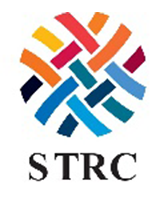While circularity has become a dominant framework in the textile industry it often falls short in practice. A promise to close loops, reduce waste, and reconcile production with environmental limits. It offers the comforting idea that consumption can continue, just differently. Yet after years as a global megatrend, the gap between vision and reality remains wide. Action has lagged, and impact has fallen short.
Category: Abstracts
State of Textile Recycling: Challenges, Opportunities, and the Path Forward
Textile waste is a growing challenge, yet its recyclability remains limited due to complex material compositions, market constraints, and infrastructure gaps. In this session, we’ll examine the scale of the challenge, where textile waste goes once discarded, and the critical distinction between discard and disposal.
Updates on Recycling and Repurposing Cotton Textile Waste: Cotton to Sugar Project
This presentation will review and update the efforts by Cotton Incorporated to obtain glucose from cotton textile waste. Cotton fiber is nearly pure cellulose, a natural polymer composed of many glucose units. Research has shown that glucose can be readily obtained from cotton textile waste through enzymatic hydrolysis.
Custom Circularity Models and Understanding the Process
In this presentation, “Custom Circularity Models and Understanding the Process,” we will explore the importance of developing tailored circularity models within the textile industry. We will discuss the process of designing and implementing these custom solutions, highlighting the unique challenges and opportunities they present. By delving into the need for personalized approaches, I will explain why a one-size-fits-all solution can be difficult and how custom circularity models can drive greater sustainability, efficiency, and innovation in the industry.
History, Capabilities and Future Plans for the Manufacturing Solutions Center
Jeff Neuville Director, Manufacturing Solutions Center at Catawba Valley Community College Created as the Hosiery Technology Center in 1990, the Manufacturing Solutions Center (MSC) at Catawba Valley Community College has evolved into a nationally known and trusted resource for manufacturers throughout the United States. With an ISO accredited testing lab, knitting labs for product development […]
Second Generation of Cotton Cationization: Sustainable Dyeing and Finishing of Cotton
Ahmed El-Shafei, Ph.D. This talk will provide a summary of dyeing results and fastness properties of cationized cotton using new cationizing chemistry knows as the Second Generation for Sustainable Dyeing and Finishing of Cellulosic Fabrics, developed in El-Shafei’s laboratory. Cotton pretreated using this new technology was dyed with reactive dyes and achieved a clear dye […]
Electronics in Textiles
Despina Papadopoulos Wearable technology and e-textiles have captivated consumers for decades, spanning a wide range of applications and utilizing various materials and techniques. Despite persistent technical challenges, the field continues to evolve, presenting new opportunities for innovative applications. In this talk Despina will give a brief history of the space and discuss some of the […]
Heat and Moisture Management of Fabrics and Garments – Testing Methods and the Science Behind
Dr. Jan Beringer In addition to quality, trends and fashion aspects, the functionality and comfort of products also play an important role in clothing and home textiles. Textile materials and systems for a wide variety of product areas such as everyday life, sports, workwear or personal protective equipment (PPE) must fulfill their function and at […]
UV Protection Factor as a Function of Cotton Fabric Construction, Dyeing, & UV Absorber Application
Katelyn Lee UV absorbers have a long history of effective application in the textile industry. Unfortunately, many potential users have misconceptions about the performance and durability of these products. This presentation will compare the UPF ratings with vs. without the addition of UV absorber for knit and woven fabrics with various weights, constructions, and dye […]
Noble’s Planet Positive Initiative
Lou Protonentis Noble Biomaterials delivers an innovative approach to antimicrobial fabric performance. Ionic+ antimicrobial and odor control technology brings two new products to market in 2024. A first-of-its-kind botanical topical fabric treatment using a new EPA-registered citric formula, and Ionic+ Pro, the most advanced non-metal yarn technology for professional and industrial applications.
